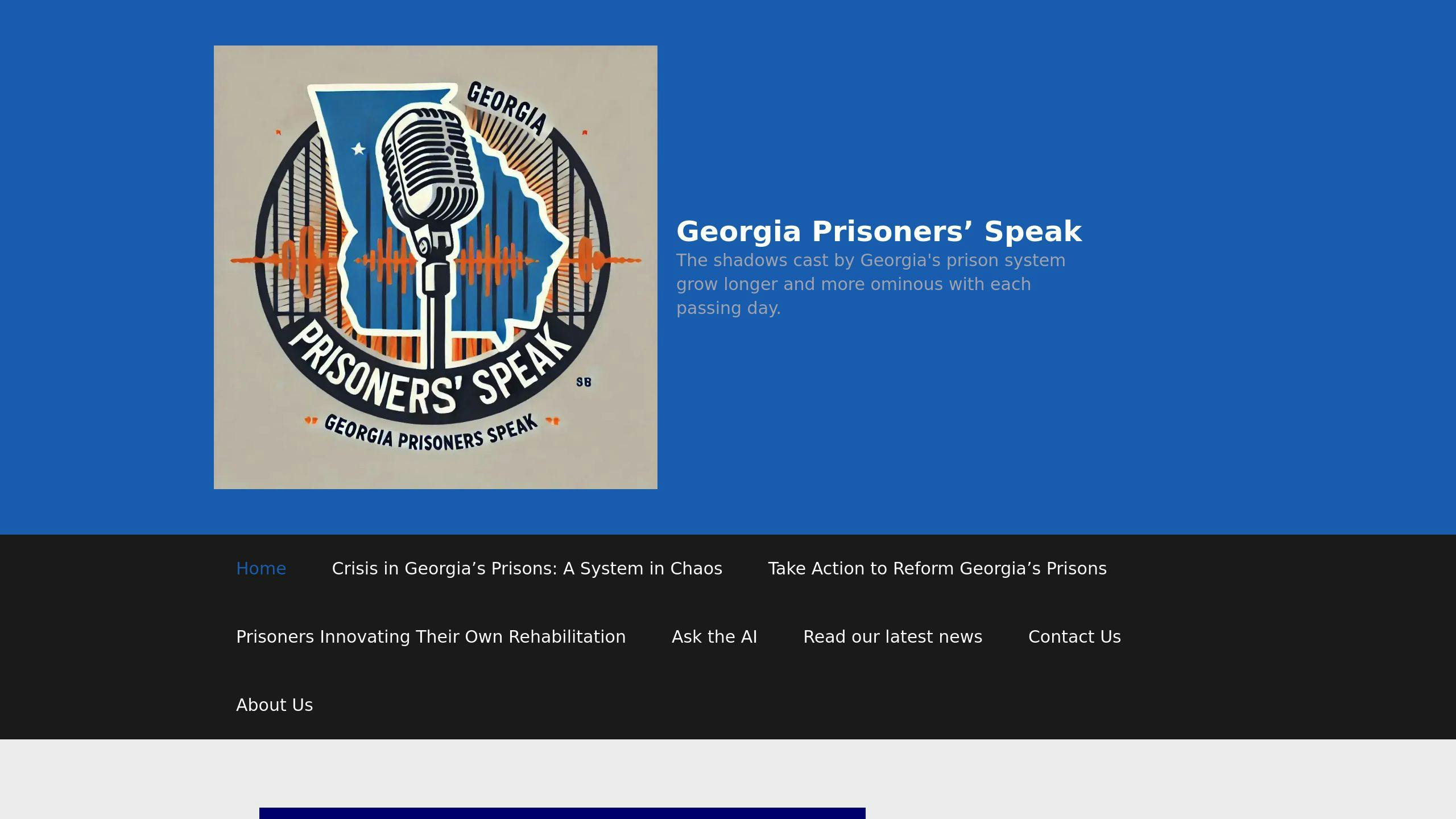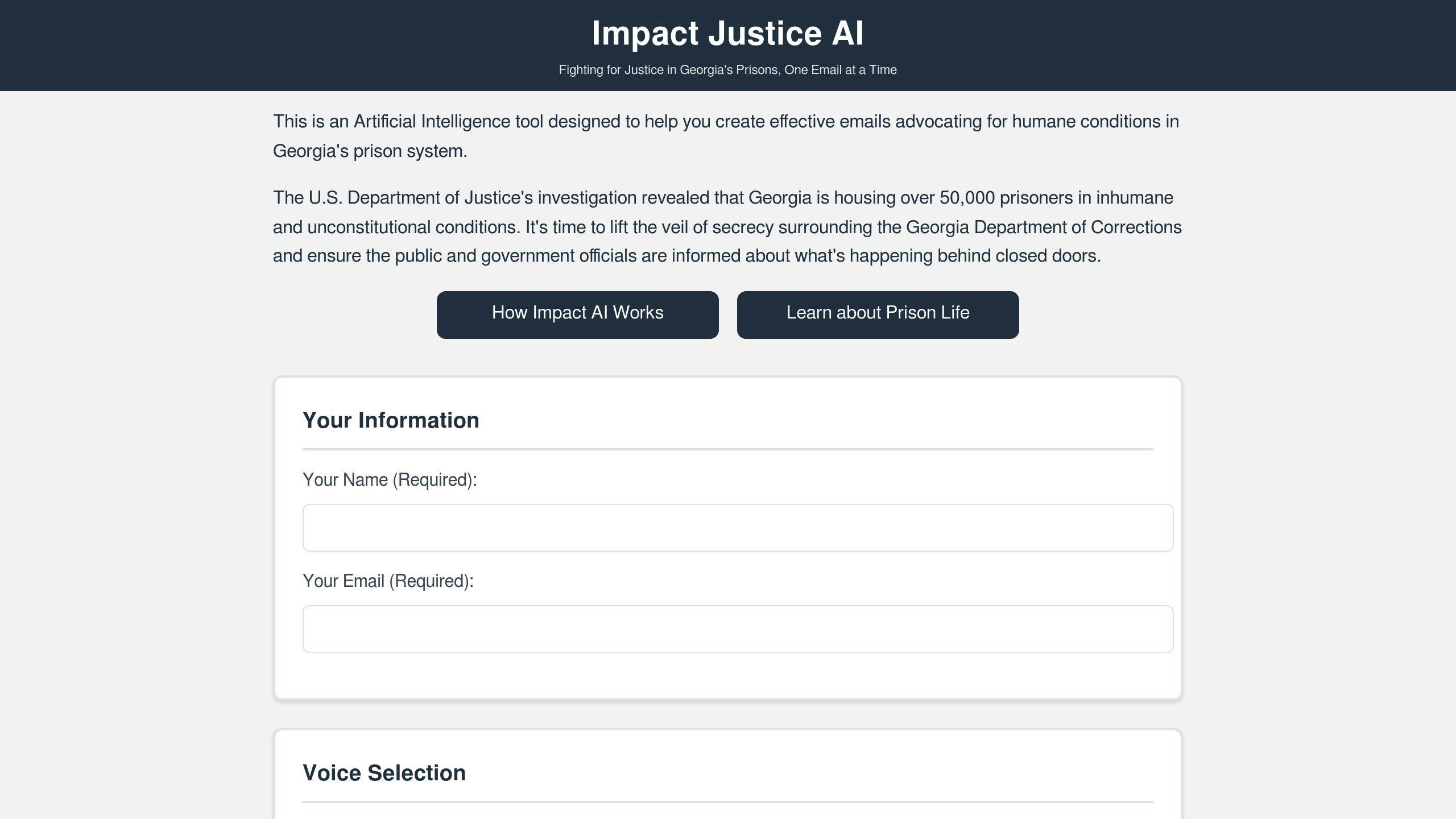Georgia’s prison reform efforts have shown progress but face critical challenges. The state reduced its prison population by 6% between 2012 and 2019, saving $264 million and reinvesting $57 million into rehabilitation programs. However, watchdog groups highlight systemic issues like understaffing, overcrowding (150% capacity), and underreported violence rates.
Key Highlights:
- Metrics Driving Reform: Recidivism rates, cost per inmate ($20,000 yearly), and program participation.
- Progress: Prison population dropped from 54,895 (2012) to 52,962 (2017).
- Challenges: Chronic medical care gaps (60% untreated), 75% rise in violence, and severe understaffing in 80% of facilities.
- Technology Tools: Platforms like ImpactJustice AI help analyze data for better oversight.
While Georgia’s data-driven approach has yielded results, ongoing issues demand better transparency, stronger oversight, and expanded rehabilitation efforts.
Advocates push for better education programs in Georgia prisons
Georgia Department of Corrections Reports
The Georgia Department of Corrections (GDC) has reported a decrease in prison populations, dropping from 54,895 in 2012 to 52,962 in 2017. This change also avoided a projected increase to 60,000 inmates. The 3.5% reduction reflects reforms focused on three key areas.
Inmate Populations and Recidivism Rates
Annual prison commitments are now at their lowest levels since 2002:
| Year | Annual Commitments | Change from Peak |
|---|---|---|
| 2009 | 21,650 | Peak Year |
| 2017 | 17,616 | -18.6% |
Georgia has shifted its focus to incarcerating more serious offenders. By 2017, these individuals made up 67% of the prison population, compared to 58% in 2009. This shift supports better use of resources by addressing the ‘Cost per Inmate’ metric, one of the reform priorities.
Rehabilitation Program Participation and Outcomes
The GDC has expanded its rehabilitation efforts, emphasizing three main programs:
| Program | Focus |
|---|---|
| Vocational Training | Building job skills |
| Substance Abuse | Addressing addiction |
| Reentry Initiative | Supporting community reintegration |
Budget Allocation and Spending
Between 2012 and 2015, the 6% drop in prison population saved $264 million. Of these savings, $57 million was reinvested into:
- Expanding accountability courts
- Improving vocational training programs
- Upgrading substance abuse treatment facilities
- Enhancing reentry initiatives
This reinvestment aims to boost participation in these programs, directly linking to one of the key reform metrics. The transparent use of funds also allows independent oversight groups to assess the outcomes, which will be discussed in the following section.
sbb-itb-7858f51
Reports from Advocacy and Watchdog Groups
Watchdog groups have highlighted serious issues in Georgia’s prison reform efforts. For example, the Southern Center for Human Rights reported that inmate assaults were 30% higher than what official state data indicated [2]. This points to significant flaws in how the state collects and reports data.
Human Rights and Systemic Problems in Georgia Prisons
Several major discrepancies have been uncovered:
| Issue Area | Reported Metric | Independent Finding |
|---|---|---|
| Facility Capacity | 100% reported occupancy | 150% actual occupancy [1] |
| Medical Care | 90% service delivery | 60% of chronic conditions untreated [3] |
| Violence Rates | 46 homicides (2020-2021) | 75% increase from the previous period |
| Staff Coverage | Full staffing reported | Severe understaffing in 80% of facilities |
"The conditions in Georgia prisons have been the subject of an ongoing civil rights crisis for years, with a brutal combination of understaffing, inadequate medical and mental health care, and horrific violence." – Alison Ganem, Staff Attorney, Southern Center for Human Rights, 2022 Annual Report
Georgia Prisoners’ Speak (GPS)

Georgia Prisoners’ Speak (GPS) has taken a different approach by focusing on direct testimony from prisoners to hold the system accountable. Over the past year, GPS has published more than 100 verified accounts detailing systemic issues.
GPS enhances accountability through:
- Collecting detailed prisoner testimonies specific to individual facilities
- Using independent fact-checking to validate these accounts
- Producing reports that connect official data with real-life experiences
Their 2024 medical care report even prompted a legislative inquiry [4], demonstrating how firsthand accounts can influence reform and improve the accuracy of reported metrics.
Technology in Tracking Reform
Advanced tech platforms are reshaping how stakeholders monitor and evaluate prison reform efforts in Georgia. These tools bring new levels of data analysis and transparency to the table.
ImpactJustice AI: A Tool for Advocacy

ImpactJustice AI simplifies the analysis of prison system data by allowing users to make plain-language queries. This platform processes complex datasets, offering insights into Georgia’s prison system that are easy to understand and act on.
Some of its standout features include:
- Pre-built templates for quick access to common analyses like recidivism tracking.
- Interactive dashboards for comparing program outcomes visually.
- Natural language queries that make it accessible even for non-technical users.
- Export tools for creating polished stakeholder reports.
For example, users can analyze budget trends or create advocacy materials quickly and efficiently. These tools work hand-in-hand with grassroots initiatives like GPS, allowing for faster and more targeted analysis of systemic issues.
Institutional Use of Analytics
While tools like ImpactJustice AI empower advocates, Georgia’s institutions are also leveraging similar technologies to enhance oversight and operations.
Predictive systems now help identify risks, such as overcrowding or understaffing, which have been highlighted in watchdog reports. Real-time monitoring systems track critical metrics across facilities, aligning with the state’s key reform priorities:
| Metric Category | Data Points Monitored | How It Helps Reform |
|---|---|---|
| Healthcare Access | Treatment delivery rates, medical staff coverage | Pinpoints gaps in services |
| Violence Prevention | Incident rates, staff response times | Enables quicker interventions |
| Program Effectiveness | Participation rates, completion outcomes | Helps allocate resources effectively |
These advancements have led to tangible improvements, such as reducing the average caseload per supervising officer to 93 cases. This change reflects better supervision quality and a more efficient system overall.
Conclusion: Future of Georgia Prison Reform
Georgia’s prison reform efforts have made strides, with data showing progress in addressing incarceration challenges. For example, serious offenders now make up 67% of inmates, up from 58% in 2009. This shift reflects the impact of data-driven policies aimed at improving the system.
"From a national vantage point, Georgia continues to set a very high bar for other states in both the approach it’s taken and the results it’s getting."
Despite these advancements, there are still critical gaps in the system:
| Issue | Proposed Solution |
|---|---|
| Lack of long-term recidivism tracking | Implement standardized tracking systems |
| Weak program quality metrics | Develop outcome-focused evaluation methods |
| Limited transparency in spending | Introduce real-time budget monitoring tools |
These challenges, highlighted by GPS and watchdog groups, underscore the need for ongoing efforts. Tools like ImpactJustice AI’s predictive analytics combined with GPS’s on-the-ground insights offer a strong foundation to tackle these issues.
The path forward will require collaboration among lawmakers, advocacy groups, and technology platforms. Expanding rehabilitation programs based on evidence and improving oversight through technology are key steps. By keeping data-driven strategies and stakeholder engagement at the forefront, Georgia has the potential to make lasting improvements to its correctional system.
